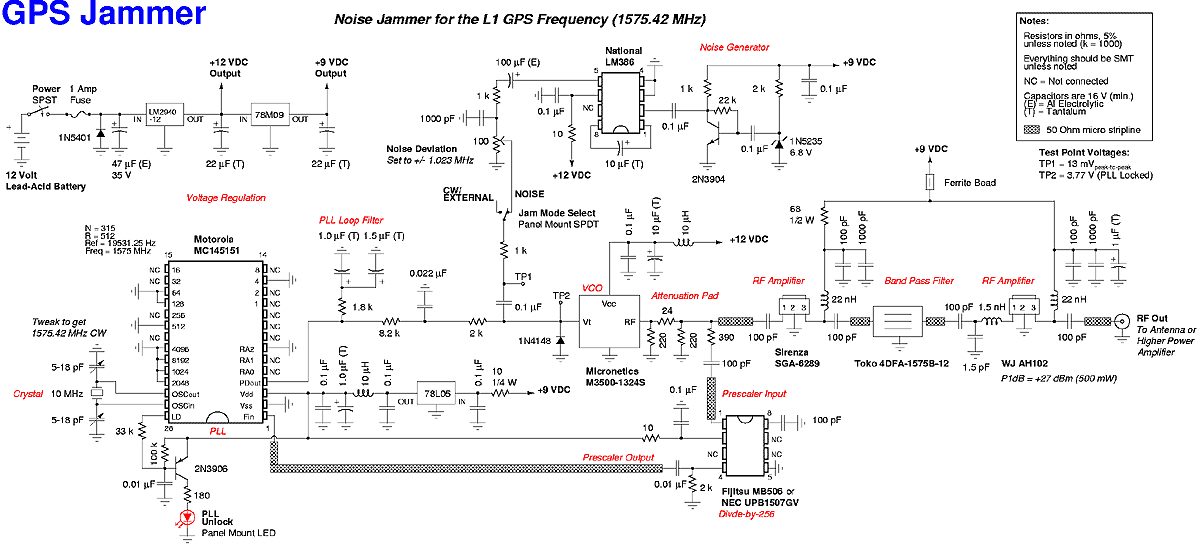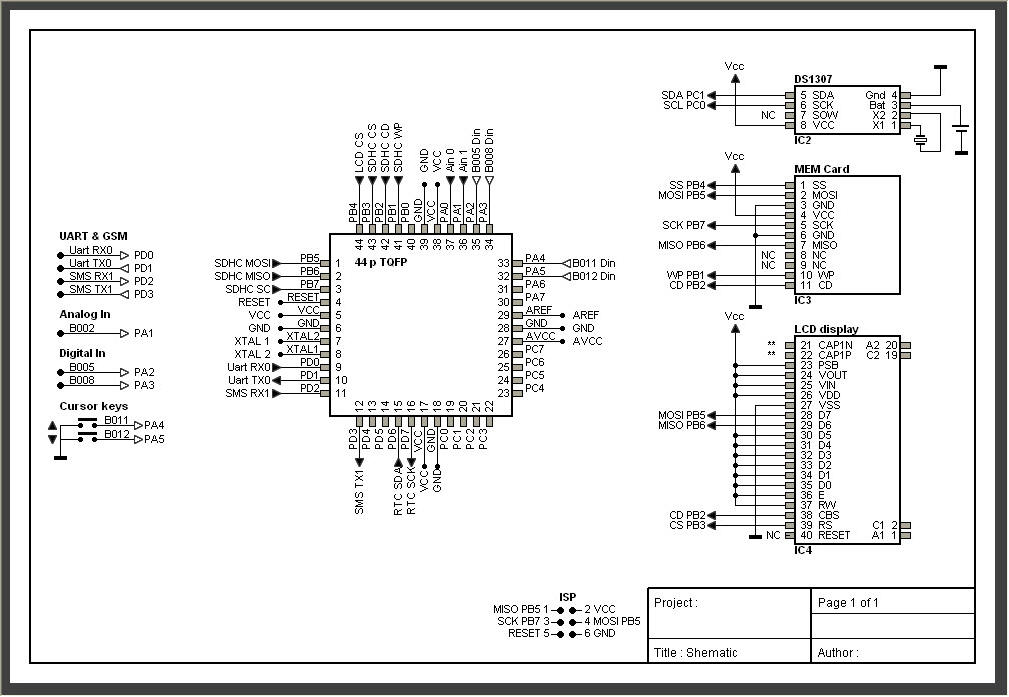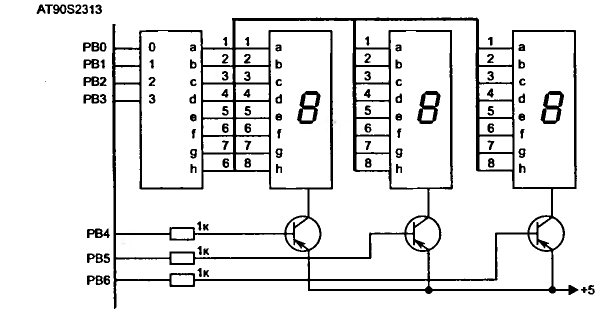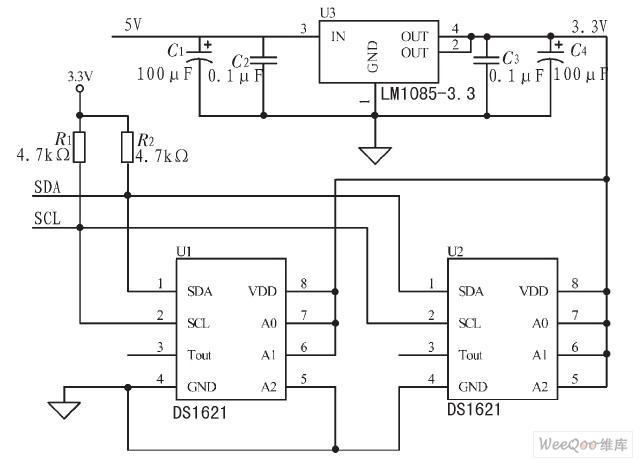
interface gps with avr

A GPS modem is a device that receives signals from satellites and provides information about latitude, longitude, altitude, and time. GPS navigators are commonly used in mobile devices to track road maps. The GPS modem includes an antenna that captures satellite signals and transmits them to the modem. The modem processes this data into useful information and outputs it in a serial RS232 format. This information, which includes latitude and longitude, is continuously sent along with an identifier string. This document demonstrates how to interface the GPS modem with the ATmega16 microcontroller to extract location data (latitude and longitude) from the GPGGA string and display it on an LCD. The circuit diagram illustrates the connection between the GPS modem and the AVR microcontroller (ATmega16). The ground pin of the MAX232 and the serial output of the GPS modem are connected together. Pin 2 of the MAX232 is connected to pin 3 of the GPS modem, while pin 3 of the MAX232 is connected to pin 2 of the modem, forming a serial cross cable. An example output string from the GPS module is provided, containing information about latitude, longitude, and time, which always begins with $GPGGA. For further details on string formats, refer to the NMEA Standards. The MAX232 integrated circuit is employed to convert TTL/CMOS logic levels to RS232 logic levels during serial communication between microcontrollers and PCs. The controller operates at TTL logic levels (0-5V), while serial communication in PCs utilizes RS232 levels. The LCD (Liquid Crystal Display) screen is an electronic display module widely used in various applications. A 16x2 LCD display is a basic module that is commonly utilized in numerous devices and circuits, preferred over seven-segment displays. The ATmega16 is an 8-bit high-performance microcontroller from Atmel's Mega AVR family, characterized by low power consumption. It is based on an enhanced RISC (Reduced Instruction Set Computing) architecture with 131 powerful instructions, most of which execute in a single machine cycle.
The GPS modem serves as a crucial component in navigation systems, allowing users to determine their precise location by processing satellite signals. The integration with the ATmega16 microcontroller facilitates the extraction and manipulation of location data, enabling applications ranging from simple navigation aids to complex geographic information systems. The use of the MAX232 IC is essential for ensuring compatibility between the TTL logic levels of the microcontroller and the RS232 levels required for communication with other devices, such as PCs.
The circuit design involves careful consideration of signal integrity and power management, particularly when interfacing with the LCD display. The 16x2 LCD is chosen for its simplicity and versatility in displaying alphanumeric characters, making it suitable for real-time feedback in navigation applications. The ATmega16's architecture provides a robust platform for processing the incoming GPS data and controlling the display output, allowing for efficient data handling and user interaction.
In summary, the combination of the GPS modem, ATmega16 microcontroller, MAX232 level shifter, and 16x2 LCD display forms a comprehensive system capable of receiving, processing, and displaying location data, illustrating the practical application of electronic components in modern navigation solutions.GPS modem is a device which receives signals from satellite and provides information about latitude, longitude, altitude, time etc. The GPS navigator is more famous in mobiles to track the road maps. The GPS modem has an antenna which receives the satellite signals and transfers them to the modem. The modem in turn converts the data into useful information and sends the output in serial RS232 logic level format. The information about latitude, longitude etc is sent continuously and accompanied by an identifier string. This article shows how to interface the GPS modem with ATmega16 and extract the location (latitude and longitude) from the GPGGA string and display it on LCD.
The connection of GPS modem with AVR microcontroller (ATmega 16) is shown in the circuit diagram. The ground pin of max 232 and serial o/p of GPS modem is made common. Pin2 of MAX232 is connected to pin 3 of GPS modem and pin 3 of max 232 is connected to pin 2 of modem. This type of connection is called a serial cross cable. The following is an example of the output string from the GPS module with its explanation. This output strings contains information about latitude, longitude, time etc and will always start with $GPGGA.
Refer NMEA Standards for more details on string formats. The MAX232 IC is used to convert the TTL/CMOS logic levels to RS232 logic levels during serial communication of microcontrollers with PC. The controller operates at TTL logic level (0-5V) whereas the serial communication in PC works. LCD (Liquid Crystal Display) screen is an electronic display module and find a wide range of applications.
A 16x2 LCD display is very basic module and is very commonly used in various devices and circuits. These modules are preferred over seven segments. ATmega16 is an 8-bit high performance microcontroller of Atmel`s Mega AVR family with low power consumption. Atmega16 is based on enhanced RISC (Reduced Instruction Set Computing) architecture with 131 powerful instructions.
Most of the instructions execute in one machin. 🔗 External reference
The GPS modem serves as a crucial component in navigation systems, allowing users to determine their precise location by processing satellite signals. The integration with the ATmega16 microcontroller facilitates the extraction and manipulation of location data, enabling applications ranging from simple navigation aids to complex geographic information systems. The use of the MAX232 IC is essential for ensuring compatibility between the TTL logic levels of the microcontroller and the RS232 levels required for communication with other devices, such as PCs.
The circuit design involves careful consideration of signal integrity and power management, particularly when interfacing with the LCD display. The 16x2 LCD is chosen for its simplicity and versatility in displaying alphanumeric characters, making it suitable for real-time feedback in navigation applications. The ATmega16's architecture provides a robust platform for processing the incoming GPS data and controlling the display output, allowing for efficient data handling and user interaction.
In summary, the combination of the GPS modem, ATmega16 microcontroller, MAX232 level shifter, and 16x2 LCD display forms a comprehensive system capable of receiving, processing, and displaying location data, illustrating the practical application of electronic components in modern navigation solutions.GPS modem is a device which receives signals from satellite and provides information about latitude, longitude, altitude, time etc. The GPS navigator is more famous in mobiles to track the road maps. The GPS modem has an antenna which receives the satellite signals and transfers them to the modem. The modem in turn converts the data into useful information and sends the output in serial RS232 logic level format. The information about latitude, longitude etc is sent continuously and accompanied by an identifier string. This article shows how to interface the GPS modem with ATmega16 and extract the location (latitude and longitude) from the GPGGA string and display it on LCD.
The connection of GPS modem with AVR microcontroller (ATmega 16) is shown in the circuit diagram. The ground pin of max 232 and serial o/p of GPS modem is made common. Pin2 of MAX232 is connected to pin 3 of GPS modem and pin 3 of max 232 is connected to pin 2 of modem. This type of connection is called a serial cross cable. The following is an example of the output string from the GPS module with its explanation. This output strings contains information about latitude, longitude, time etc and will always start with $GPGGA.
Refer NMEA Standards for more details on string formats. The MAX232 IC is used to convert the TTL/CMOS logic levels to RS232 logic levels during serial communication of microcontrollers with PC. The controller operates at TTL logic level (0-5V) whereas the serial communication in PC works. LCD (Liquid Crystal Display) screen is an electronic display module and find a wide range of applications.
A 16x2 LCD display is very basic module and is very commonly used in various devices and circuits. These modules are preferred over seven segments. ATmega16 is an 8-bit high performance microcontroller of Atmel`s Mega AVR family with low power consumption. Atmega16 is based on enhanced RISC (Reduced Instruction Set Computing) architecture with 131 powerful instructions.
Most of the instructions execute in one machin. 🔗 External reference





